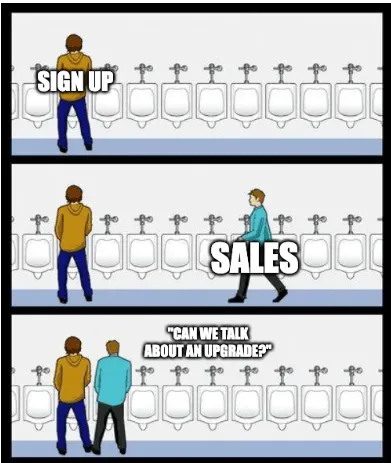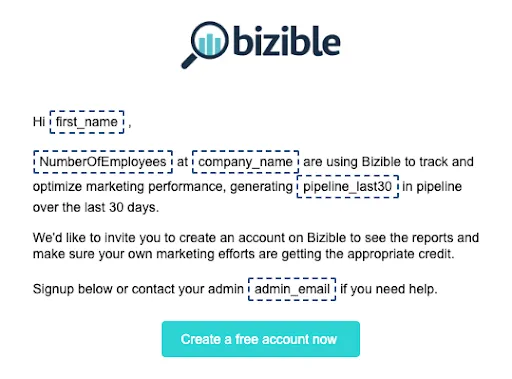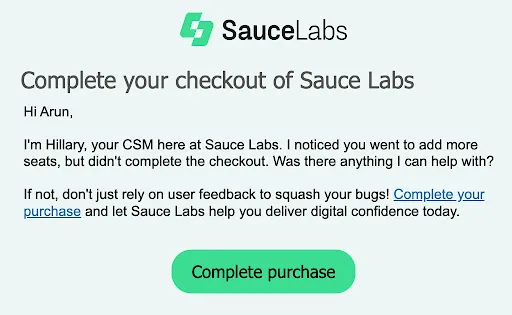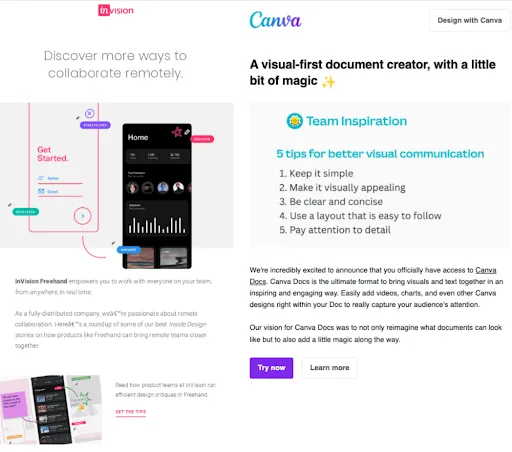Best Practices for Maximizing a Product-Led Growth Motion
Aaron Bird, CEO and co-founder of Inflection.io (former VP of Product Adobe and Marketo) walked us through the best practices for maximizing a PLG motion. This article is a summary of the webinar.
You can watch the full video here 👇
Onboarding and Activation
Why do customers churn?
To answer this question, we need to go back to the root causes of which the biggest is that these customers didn't onboard correctly in the first place.
Enterprise customers end up not renewing their contracts often because they never got to the value realization phase. They never got onboarded properly.
If you're trying to convert a free user into a paid customer in a short period of time, or a pay-as-you-go customer into a higher recurring contract, then onboarding and activation become even more critical because you're not going to get much revenue or any revenue at all out of these customers.
The best PLG companies are obviously really good at onboarding and activation and just in general good at expanding.
Talking to a lot of folks in PLG helped us understand that time-based communications for onboarding and activation sequences are a general practice. NOT a great idea!
Here are some best practices for onboarding and activation:
- Send them the right message at the right time. It can be in the product, email form, or even from an SDR hand holding the customer through the process.
- Ask them to go to step two only after they've done step one. And, hopefully right after they've done step one and use that momentum to help them into the process.
- Segment your onboarding by customer type, company size (enterprise, SMB, mid-market), etc. Have a different swim lane for different segments of customers, because they're all going to onboard differently.
- Measure your onboarding/activation success differently for segment personas (company size, verticals, etc) and personas (the contract signer, financial stakeholder, etc) the same way you’d segment in your product marketing.
In summary, being thoughtful about what segment the customer is in, the persona, and the next actions in the product you ideally want them to take is a great way to orchestrate onboarding and activation to reduce churn.
The same best practices are very relevant even outside of PLG. They hold true even if the onboarding is a post-sale process in an enterprise segment.
Creating Value from all Sign Ups
Most PLG companies allow a self-serve in some way shape or form, whether it's a freemium version, it's a free trial or even a pay-as-you-go model where someone could get in on a credit card and start to access the product. It's not just our ICP that ends up using the product.
Let’s break this into three groups.
1. Junk accounts
This is a group that has no monetization value, for example, students, agency contractors trying to get a feel of the product, etc.
Letting them in the product is an individual decision to make for a PLG business depending on the type of product and cost of goods. You can decide if you want them in your product and gate access by making it a requirement to have business email addresses.
Some prime companies do leverage these accounts and track the value they receive. They can also create value for your company with reviews, community activity, and even build goodwill.
2. Not target accounts
These accounts might have none or sometimes a small monetization opportunity in their current role.
If the user is the right persona but the wrong account (for example in an SMB but you only sell to Enterprise) they can still become your customer at a later date. Pull some of the personas with potential and create swim lanes for them. If they've received value out of your product today, put in a word with your SDR and remind them to follow up where they go to a new employer.
If these accounts are in the right profession same as your persona, you might even get some value through referrals from them. Let an SDR check out the LinkedIn connections with your target accounts and reach out for a referral.

Letting accounts with no immediate monetization opportunity can be leveraged by building relationships to gain a competitive edge.
If you have similar accounts with small monetization value you can use one-to-many communication to convert them to paid and higher tiers.
3. Target accounts
This is where PLG companies get the meat of their revenue. There's a monetization opportunity from these accounts now and they’re likely to grow over time. There's a chance to expand this and continue to expand this opportunity.
Think about your product qualified leads versus accounts. A lot of companies are creating PQLs based on what the person is doing in the product. That's a good first step.
But, if you're selling into an organization, which most of us are, then you might have 10 people in there in that account in your product, and just looking at each of their actions in isolation is not good enough. So, make sure that you're either working on or evolving to a product qualified account perspective. That means being able to look at all of the product data, the product telemetry data that you've got around the entire account.
How can you use that to understand where they are in their buying journey?
There are probably some really great signals in there like, what is the signer doing versus what the admin doing… the buyer versus the user. Understanding the actions each persona takes is critical to be able to figure out when the Sales can talk to them.
Let’s take the example of a dev tool. If you're selling dev tools, a developer signs up with their corporate or even a Gmail address. They're doing a technical investigation to figure out if this is something that they can use in production.
Reaching out to them is probably going to be unwelcome and probably going to push them away or have them just not pay attention to the communication you send. But it still could be a great lead and could be an account that could be worth a lot long term.

Don't reach out to that developer probably even at all unless they've raised their hand or asked for a conversation, but start doing some outbound to the other folks on that account. Including the buyer who's probably the CTO or the dev manager that's in charge in this area. Those people are obviously more likely to have a conversation.
You'll know based on the history of your product data what you need to get that developer to an aha moment before they're even going to talk to their manager about it or before the managers really need to take your call.
Definitely think about the buyer versus the user versus the executive sponsor. If you start to get a groundswell, you can drive FOMO with other teams leveraging the product data. This gives you a warmer approach as compared to an SDR’s cold outreach. where your Sales person can be a product specialist and offer to help accomplish a goal using the product.
8 Campaigns to Drive Expansions
These are just eight campaigns you can do today that will help expand ARR in your existing customers, whether that's free or paid. And, the great news is that you can do all of these things without changing your product. These are all things that you can do within the four walls of a go-to-market (GTM) team.
Milestone Campaigns
Milestones are every moment where you deliver value in the product.
You can figure out when those moments are for every single person using product analytics data.
The customer may have run a report and experienced increased ROI that your product measured or they invited the third user from the team who just joined. Whatever the aha! moment is, it is a great time for you to go and ask something from the customers after you delivered that value.
For example, in Inflection, we measure if a customer’s campaign drove a significant ARR for them. Once a customer experiences that major aha! moment, you can ask for a G2 review from one of the executives, a referral, try out a new feature, and so on.
Here’s a milestone email example from Mural.

Feature Adoption Campaigns
Feature adoption or lack thereof is something to watch for in PLG businesses.
You can find this information in your product analytics. For example, during onboarding, if the users took step one and never took step two for more than say, 2 weeks, you have to get them back into the product or you might lose them.
This is how Voiceflow encourages feature adoption Whatsapp integration, in this case using Inflection.

Once you understand your buying journey and micro-buying journeys you will have an idea of what you want the users to do next in the product. And, use that information to build one-to-many ever-green campaigns to drive better product adoption thus driving more value for your customers over time.
Using Product Data to Drive FOMO
You can pull off this campaign even if you are not PLG.
This is an email we would send to a paying customer. And in this example, the content marketing team was using our tool to measure ROI and not the field marketing team. So, we took all the great information from what the content marketing team has done, and the ROI they're receiving from Bizible and sent that information to the field marketing team and asked them to sign up.

You’ve got to know whom to invite and factors like pricing and packaging are going to influence the decision. But, it allowed us to expand through marketing. The more adoption we drove up the product, the more money we're going to get in ARR and in the end, these teams were less likely to churn.
So, how can you pull off a similar campaign?
Whatever your pricing metric is, drive more product adoption. Get more people to use it and drive stickiness. If your sales team is exploring the org, you've already got all the contacts on the account. You can merge that data with the product users (from product data) in the org.
When they are successful in the product you can send the FOMO email to others in the org. You could automate it with Inflection today.
You can launch one-to-many or one-to-one versions of this email. Even rope in the AE for your top 50 target accounts. You can also hand off to the SDR team to run outbound campaigns with this idea.
In summary, make sure that you are using what success looks like in your product to drive sales and expansion. And, also this fits in with your terms of service.
Thresholds
Thresholds is a fairly easy campaign to launch and a lot of companies are already doing something similar.
Think about your pricing and packaging tiers ( like pay-as-you-go, per seat, etc) and where the step-up is. For example, if you charge per user, adding another user becomes a threshold.
When a customer starts to come up and close to that threshold, say if they bought nine user licenses, and they're using eight or they just went from six to eight really quickly, you’d send a threshold reminder with an upgraded line.
Fullstory as shown in the example runs a threshold reminder campaign for usage limits.

Do not wait for the customer to max out their allotted seats or usage. Reach out just before they max out and see if they want to go to the next tier. You can experiment by creating urgency or giving a discount.
This can also be a one-to-many communication. Or, send a slack message to alert a sales rep to reach out to the account reaching their threshold.
Abandoned Cart
These campaigns are basically e-commerce 101 to expand the business. Every e-commerce company on the planet has found gold with abandoned cart campaigns.
Abandoned carts are literally ARR just sitting on the floor and all you have to do is go bend over and pick it up. If someone starts that process and doesn't finish within an hour or two send them a sequence of follow-ups. Everyone in B2B SaaS is also doing this today.
Here’s an example from one of Inflection’s customers - Sauce Labs. These targeted emails are seeing an improvement in conversions and better ARR (up to $100K) through this campaign.

Upgrades or Cross-sell
It's harder to find the signals to upsell and cross-sell. But there's gold here.
So much upgrade intent is in your product data and needs some time to figure it out. You can start small on this and just go after the things that are obvious like gated features. If your product team is not already tracking this, put in the feature request. It gives you a great advantage to see these in product data.
Once a target is in the value realization phase, show them all the features that they don't have. But, wait for them to click on those features before you do. For example, a user tries to run a report that they don’t have access to because of the pricing tier they are in. That’s your signal! Here are a couple of examples from Invision and Canva.

You can choose between sending a one-to-many communication or alerting a sales rep to have that conversation if it is one of your top target accounts.
They tried to do something and they didn't do it. Let's help them do it by upgrading. Again, one-to-many communication is fine. Maybe you want to email the salesperson or slack the salesperson to tell them to go have the conversation. Insert a calendar link in that email to make scheduling a call easily. Also, send it from the email address of the right person (account manager, sales rep) to schedule the call. If the customer is not ready yet, they might at least reply with a question.
This is an evergreen campaign a PLG company can just automate and it will generate ARR and pipeline opportunities forever.
Reminding of Value
One of our favorite campaigns at Inflection, and we call it the automated QBR. You can use this idea for many other use cases and not necessarily for a QBR.
It goes back to the whole idea of using product data, figuring out what value they're receiving in your product. Leverage that knowledge just to remind them of the value that they're experiencing.
Maybe you considered the idea and decided you don’t need to automate QBRs for your top target accounts. Think again!
Oftentimes the executive sponsor might just rely on their teams for the QBR. And, the person who signed up doesn’t have the budget authority. So, this email is a great tactic to get the sponsor’s attention.
Let’s see the example of Stack Moxie, one of our customers. They help marketing operations teams test their implementation. They answer questions like Are the leads routing correctly? The number of tests run done and how many tests failed? for MOPS teams. They send a weekly email answering all these questions.

Basically, you can go and find all of the value that the account has received, customize the email if needed, and schedule it weekly or monthly. There can be many ways your product delivers value but, pick up the top 5 or 8 metrics you want to show.
The metrics could be different for each customer and sorted in order of value for the customer. Send it to everybody at the account including people that may not show up to QBRs.
When it's time for renewal the executive sponsor who may not be in the product all the time still knows what they are getting from your product. Especially in times like today, when budgets are really under scrutiny, the products that oftentimes don't get budgets allotted, or end up getting cut are the ones that the executive sponsor wasn't aware of or using on a daily basis.
Send them a monthly email showing them all the great stuff that their team is doing in your product. You do that every month for 12 months, they get that contract on their desk, and they're more likely to sign it because they remember the value that was received. You can send it from the CSM and the account manager whoever owns the accounts and not from a ‘no reply’ email address. These are personalized communications and can mint money when sent to the executive sponsor.
Bring users back
If a customer has gone inactive, and they are a user persona (someone who is in the product every day) don’t just say ‘it’s been 3 days since you logged in…’.
Check out this example from Webflow. They are creating FOMO highlighting how much other users are using the product and all the value they are missing out on.

So, deliver value, show the value or bind them with the value, and create FOMO. Those are great hooks to get inactive users to engage and then ask them to come back into the product.
Product inactivity is a major churn signal. If the user didn’t log in for a month or so, email the account manager the CSM, and let them know that there might be a churn risk here.
Takeaways
In summary,
- It is all about highly personalized experiences. In this PLG world are armed with an entirely new data set: what are people doing in our product? Use this to figure out not only how to create better experiences for the customer, but also to find GTM gold and drive more NRR.
- Spend time mining product data to drive outbound efforts that convert better, and expand revenue from accounts you already have.
- There's gold in the hills. The right product data is worth probably more value for the GTM teams than for the product team.
Some of our customers are already running these campaigns to drive more NRR for their PLG companies. Get in touch to see Inflection in action.

%201.webp)





